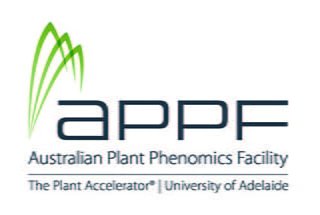Republished extract from the Australian Plant Phenomics Facility blog.
What are ‘good bugs’? What is Integrated Pest Management? What is the APPF’s approach to a harmonious plant growth environment?
Science fiction couldn’t write it better… ‘A wasp homes in on its prey, detecting the distress signals of an infested plant and the honeydew secretions of hungry aphids. It locates and injects a living aphid with an egg, which in time, hatches inside the aphid and consumes it from the inside. Two weeks later an adult wasp will burst out from the mummified shell of the now dead aphid…’
Sounds awful right? But this is nature, integrated pest management and agroecology at work. And if you have a crop to protect, it’s exciting!

Most insects are beneficial. In natural ecosystems, pest species are kept under control by climatic conditions, food availability and natural enemies. In a production environment, natural enemies, known as beneficials, are organisms that feed on or otherwise kill the target pest. They may be predatory insects or parasitoids, fungi, bacteria, viruses or insect feeding birds.
Why is the APPF ‘bugging out’?
Every day we watch closely over the environments of the plants in our care, monitoring heat, light, water, soil and so on. But it is a well-known fact, no matter how well managed your growth environment is, bugs have a way of finding their way in. These troublesome types may include Western Flower thrips (Frankliniella ocidentalis), various aphids, two-spotted mites (Tetranychus urticae) and greenhouse whiteflies (Trialeurodes vaporariorum) to name a few.
Around the world, growers, farmers, researchers and horticulturalists have used chemical spraying to manage these pests, however, many pests are now showing clear signs of acquired resistance to chemical controls. Use of stronger chemicals such as organophosphates usually only deliver a temporary drop in numbers and increase exposure risks to the operator, staff and researchers who may later handle the plants.
With a clear view to ensuring the safety of our plants, our staff, our users and our environment, our horticulture team investigated the Integrated Pest Management (IPM) principles being embraced by the commercial horticulture industry across protected and field crops. By using IPM, also known as Integrated Crop Protection (ICP), the growers are able to achieve better value out of fewer insecticides while improving the control of pests.

So, what is the APPF doing for IPM?
The APPF Adelaide node now runs a regular fortnightly program, releasing predatory mites and insects into the greenhouses.
“We rotate a variety of predators that prey on all lifecycle stages, from larvae through to adult pests. The use of pesticides in this regime is, of course, counterproductive, as there is often a 3-8 week period where residues will kill the beneficial predators. When introducing an IPM plan make sure you learn what the different life-cycle stages look like for both beneficial insects and pests – you don’t want to accidentally wage war on the ‘good guys’,” explained Robin Hosking, Manager, Horticulture.
“As an example of the effectiveness of our IPM, we have greenhouse rooms that have not been sprayed for 3 months and the pests are well controlled. Previously I had been spraying these rooms as often as weekly to fortnightly.”
